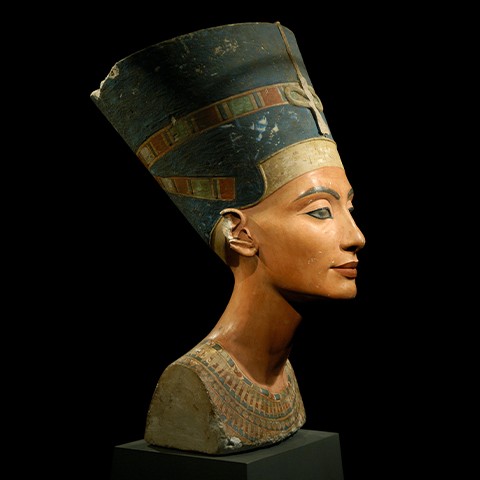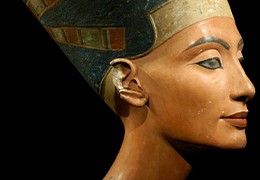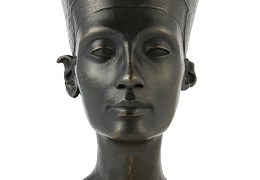THE DISCOVERY OF NEFERTITI
The Nefertiti bust—the most stunning bust in ancient art—is over 3,400 years old, yet it was only just discovered over a century ago. The bust has been shrouded in controversy ever since it was discovered and, even today, this Egyptian queen guards the secrets to unsolved mysteries.
On 6 December 1912, German archaeologist Ludwig Borchardt and his team discovered the bust of Nefertiti at the Tell el-Amarna site, the ancient city of Akhetaton. They were excavating the remains of the workshop of the master sculptor Thutmose when they uncovered the iconic face, practically intact, along with a series of stone heads, masks, and plaster casts of the royal family.
The bust's move to Germany is fraught with controversy; Borchardt is suspected of having concealed the bust's real value to obtain permission to remove the piece from the country. Egypt’s demands for its repatriation began in 1924 when the bust was first displayed to the public, sparking an intense argument that remains unresolved today.
This, however, is not the only controversy that hangs over the bust; in 2009 a Swiss Egyptologist, Henri Stierlin, claimed that the bust was not as ancient and exceptional as it was believed, but that Borchardt asked one of the restorers working at the excavation to craft the piece. Faced with this accusation, the Egyptian Museum in Berlin, where the work is on display, certified its authenticity based on documentation and analysis by CT imaging.
Her dazzling beauty and the still-unanswered questions surrounding her have made Nefertiti one of the most famous queens of the ancient world, yet she herself is still shrouded in mystery. Little is known about her origins or her fate after she disappeared from public life, and the whereabouts of her tomb is, today, one of the widely studied mysteries of ancient Egypt.



